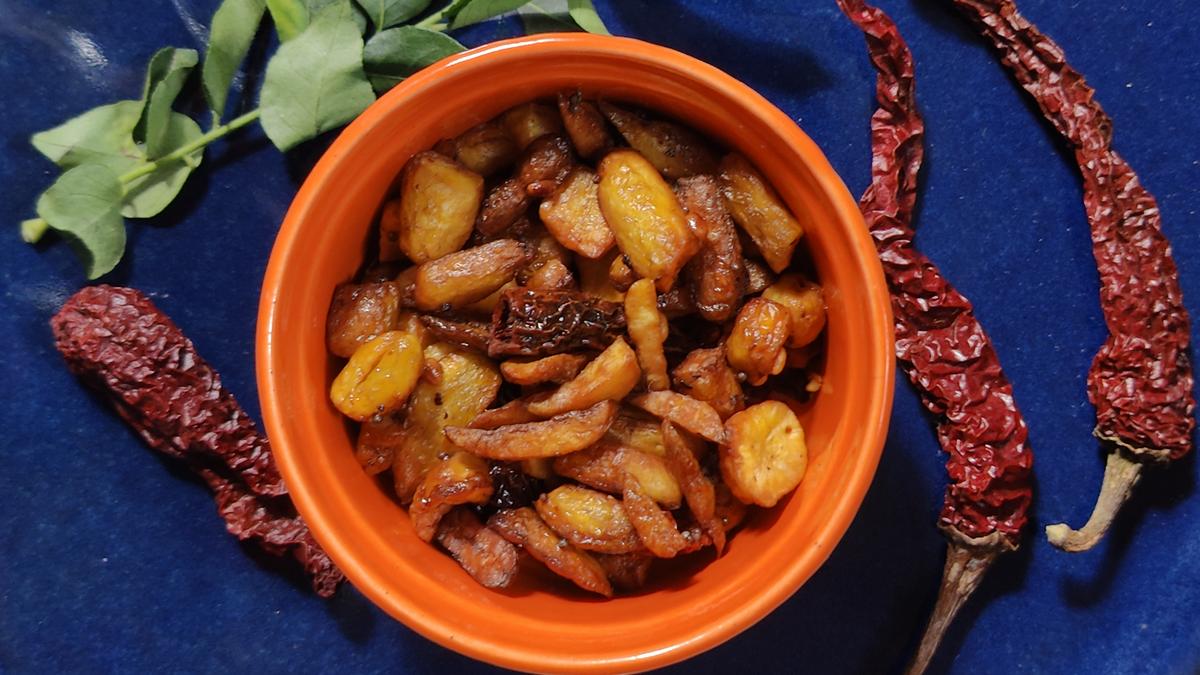
How Chinese potatoes can be a delicious and nutritious winter dish
The Hindu
Chinese potatoes or sambrani gadde are a vegetarian delight not too many people are aware of
“The task of cleaning sambrani gadde by vigorously rubbing them in a jute bag was always mine at home,” reminisces Vijayalakshmi Rao, a mental health professional from Basavanagudi. “Even though the task was laborious, it was worth it as my mother would make a delectable curry which was a household favourite. We haven’t made it ever since my mother passed.”
A popular winter vegetable, sambrani gadde as it is called in Kannada is known as koorka in Kerala, kooka in the Konkan region and sirukizhangu in Tamil Nadu.
A perennial herbaceous plant, native to tropical Africa, Chinese potatoes are also grown in Asian countries including Sri Lanka, India, Indonesia and Malaysia. In India, it is cultivated in coastal Karnataka, the Konkan region and Kerala and is available from October to February.
“It’s availability is closely tied to the winter season, making it a beloved vegetable during the cooler months,” says Bhavesh Pradip Tambe, Executive Chef, The Vitskamats Group. “Koorka is typically harvested from late October through early February, with the peak harvest season falling between December and January.”
It is key to note that while it is harvested earlier in Kerala, a special variety of this vegetable called Sanekallu Sambrani is available in the Udupi region during November and December. Cultivated in the village of Sanekallu, it is known to have a distinct flavour due to the local soil, water and climatic conditions.
“The villages in and around Udupi are known for a better quality of this tuber,” says Naren Thimmaiah Barianda, Executive Chef, Vivanta Bengaluru, Residency Road. “They taste better due to terroir and are typically planted during the monsoon, so they are ready for harvesting by November. They are carefully dug out from the soil and these tiny tubers have a whitish and violet hue when peeled.”
While Chinese potaotes look like colacasia (arbi/taro root), these muddy tubers are much smaller in size and have a typical aroma and flavour. “The flavour of koorka is mild, earthy and slightly nutty, making it adaptable to various types of dishes,” says Shailendra Singh, Corporate Chef Pride Hotels and Resorts. “It is less sweeter than a regular potato and has a more savoury profile that pairs well with a host of spices.”

Thomas Jefferson and Abraham Lincoln are two of the greatest presidents that the U.S. has seen. You probably know that already. But did you know that Jefferson made what is considered the first contribution to American vertebrate paleontology? Or that Lincoln is the only U.S. president to receive a patent? What’s more, both their contributions have March 10 in common… 52 years apart. A.S.Ganesh hands you the details…












